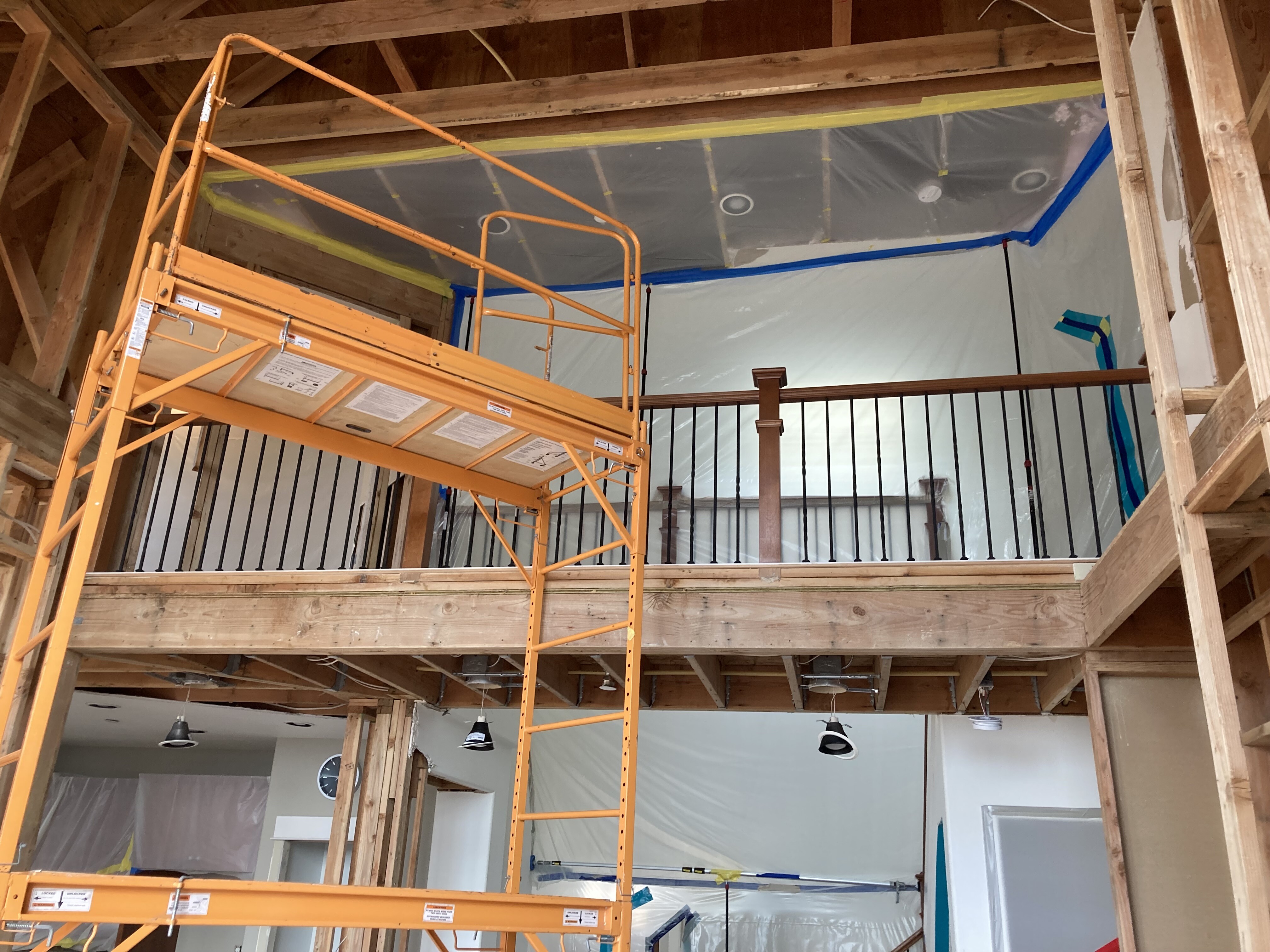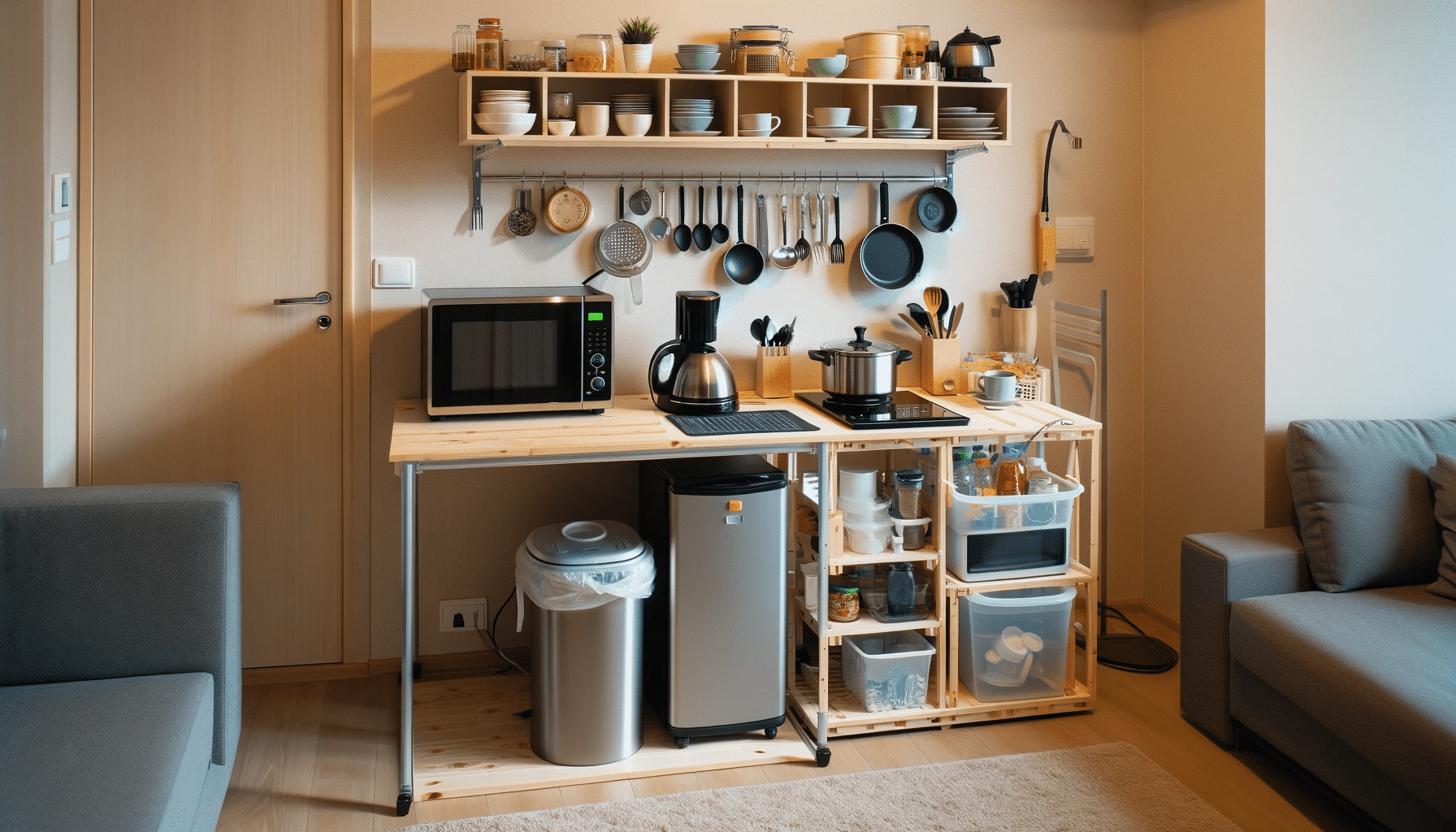When planning a home remodel, you might have some concerns about living in your home while construction takes place. What if it’s too loud, or you can’t use certain parts of your home due to the renovations? While these concerns are certainly legitimate, it’s usually possible to live at home during a remodel with the proper planning and mindset.
With years of experience in custom home remodeling, our team at Lamont Bros. Design & Construction has helped many homeowners explore whether staying at home during a remodel is feasible or not. While different solutions work for different people, most of our clients choose to remain in the home through the duration of their project.
In this article, you’ll find an in-depth breakdown of the advantages and challenges of living in your home during a remodel. We will cover how these decisions affect your budget, lifestyle, and overall experience with the remodeling process. After reading, you’ll be armed with the knowledge and confidence needed to make the best decision for your specific circumstances. The topics we’ll cover include:
- What can influence your decision to live at home
- Pros of staying at home during your remodel
- Cons of staying at home during your remodel
- How to decide which options is best for you
Factors that Influence Whether You Can Live at Home During a Remodel
Before diving into the decision of whether to stay or relocate during a remodel, let’s first consider a few factors that will impact your choice. From the way you live your daily life to the financial implications, understanding these elements will provide a clearer path to making an informed decision.
Lifestyle Considerations
Whether you stay at home during a remodel largely depends on how much disruption to your daily routine you can tolerate. If the project is going to significantly interrupt your life, moving out temporarily might be the best option.
For homeowners who work remotely, construction noise and activity can be particularly disruptive. You’ll often have a mix of heavy machinery, power tools, and construction carpenters communicating with one another. All this noise can make it hard to complete work tasks or conduct important calls.
If you have children, their need for a quiet, stable environment is also an important factor to consider. While adults may be able to begrudgingly tolerate disruptions to their lives, children often have a much harder time with it. The necessity for uninterrupted access to areas like kitchens or bathrooms for active families might sway your decision.
Project Scale
The extent of the remodeling also plays a significant role in whether or not you relocate. While minor renovations might be less intrusive, a whole home remodel or significant changes to essential spaces like kitchens or bathrooms can turn your home into a challenging environment.
Consider the spaces being remodeled and how frequently you use it throughout the day. For example, a kitchen remodel will significantly disrupt meal preparations and a large portion of shared family living space.
Even if your home has multiple bathrooms, remodeling one of them means you’ll have one less bathroom for people to use during their regular routines. For homes with teenage children, this can be an especially contentious topic.
Financial Considerations
Cost is often a decisive factor for homeowners considering if they should live at home during their remodel. On the one hand, relocating adds additional costs for rent, storage, and transportation. Keep in mind that every dollar you spend to relocate is money that could go towards your remodel instead. Can you afford the extra expense of renting a different place without compromising on the quality of your remodel?
On the other hand, staying at home might save money on temporary accommodations, but it also means living in an active construction zone. Ultimately, it’s about balancing the financial impact with the potential stress and inconvenience of living on-site during the renovation.
Pros of Living at Home During a Remodel
There are several potential advantages of staying in your home during the remodeling process. These benefits can range from financial savings to the experience of watching the transformation of your home.
Cost Savings
The most apparent benefit of staying put is avoiding the cost of alternative accommodations.
Remodels can be expensive, and saving on rent or hotel fees can help keep your budget in check. At $100 per night, a 5-week kitchen remodel could set you back $3,500 in hotel fees alone.
For many, this factor alone can be the deciding point, especially when the remodel is extensive and the costs are high.
Avoid the Stress of Relocating
Moving, even temporarily, is a lot of work. The process of packing up essentials, finding a temporary residence, and then moving back in a few weeks later can feel like an overwhelming undertaking.
This is especially true for families with children or pets, where the need to maintain routine and stability is crucial. Staying put eliminates the upheaval associated with moving and allows you to maintain a semblance of normalcy, even as your home undergoes significant changes.
Regular Check-Ins
Being present means you can do regular walkthroughs of the renovation space as your build team allows. This opportunity gives you a chance to see the progress, understand the construction process, and spot any potential areas of concern early on.
This proximity can also lead to a smoother renovation process as you’re available to address unforeseen issues or make approvals on the spot. Furthermore, your presence on-site helps in building a rapport with the construction crew, facilitating better communication and understanding.

Cons of Living at Home During a Remodel
While there are advantages to staying in your home during a remodel, it’s also important to weigh those benefits against any potential drawbacks. Understanding these challenges will help you prepare for what’s to come or possibly reconsider your decision to stay.
Disruption and Noise
Living in a construction zone is inherently disruptive. The constant noise from tools and machinery can be a significant stressor, especially if you work from home or have young children.
In addition, utilities such as water, power, and HVAC may occasionally have to be disconnected during a remodel. Although such disruptions are temporary and rarely happen without prior warning, homeowners often find this aspect of living through a remodel to be frustrating.
Living in a Construction Zone
Beyond noise, the physical presence of contractors, materials, and ongoing work can turn your home into a less comfortable and more hazardous space. Despite their best efforts to keep areas clean and safe, dust and debris always find a way into the home.
Also, for safety reasons, the area being remodeled will remain sectioned off until the project is complete.

Functional Limitations
Remodeling often means that essential parts of your home like bathrooms or kitchens are out of service. This can alter your daily routines, from cooking and eating to showering and using the restroom. Temporary setups, such as a portable bathroom or a temporary kitchen, can help. However, they rarely replace the convenience of your regular amenities.

Making the Decision: To Stay or To Go?
Deciding whether to stay in your home during a remodel is a personal choice that depends on various factors. Understanding the impact of your decision on your daily life and well-being is crucial.
Evaluate Your Finances
Think about your budget carefully. Sometimes, the cost of temporary accommodation is justified by the reduced stress and improved living conditions during the remodel. However, if you go with this option, make sure the cost of renting a temporary home won’t require you to compromise on the scope of your remodel.
Consider Lifestyle Impact
Reflect on how the remodel will affect your daily routine. Can you tolerate the noise and disruption? Do you have the flexibility to adapt to changing circumstances, or would the constant presence of workers make your home feel uninhabitable?
Home Functionality
Decide whether your home can still meet your non-negotiable needs during the remodel. If essential areas like kitchens or bathrooms are out of service, that will have a huge impact on the livability of your home. Sometimes, the inconvenience might be too great, and relocating temporarily becomes the more sensible option.
Developing a Backup Plan
No matter your initial decision, having a backup plan is wise. If staying at home becomes too challenging, know where you can go, whether it’s a short-term rental, a friend’s house, or even taking a vacation to escape the chaos.
Ready to Learn More About Your Remodeling Options?
After reading about the different options, do you have a better idea of whether or not living at home during your remodel is the right decision for you? Now, take the next step in your remodeling journey by downloading our free guide “6 Steps to A Successful Remodel.” In it, you’ll find a comprehensive 6-step plan to help you get the most out of your home remodeling experience.
Want to talk directly with a professional remodel designer? Click the button below to schedule a free consultation with one of our design consultants. We’ll help you explore the possibilities for your project and guide you through the remodeling process step by step.



